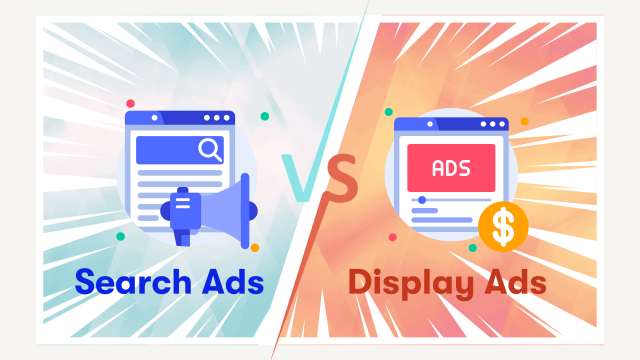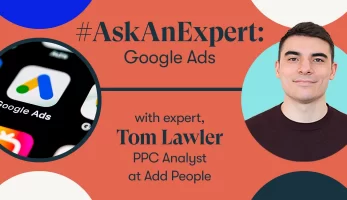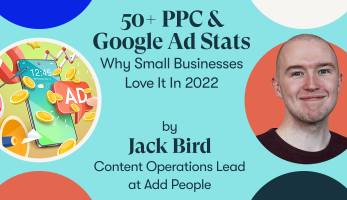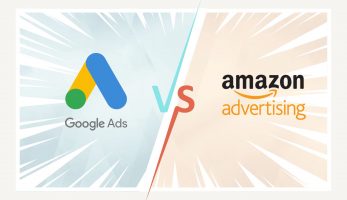What are Google Ads?
Have you ever searched for something on Google and noticed that the first few results have the word “ad” next to them?
Well, they are what we call, Google Ads and they are used by businesses all over the world to improve their online presence and target high-intent customers interested in their products or services and only paying per click on their ads.
Every second, there are thousands of searches performed on Google and the majority of search results include Google Ads.
Google Ads are an effective way of driving relevant and qualified traffic to your website exactly when people are searching for the types of products or services your business offers.
Understanding Search Ads
Search Ads are the most common ad type used by businesses and appear at the top of the SERP (Search Engine Results Page) for searches relevant to your products and services.
Below, is an example of what a search ad looks like in situ. The ads are text only and clearly marked to let consumers know that the business has paid to have their website feature at the top of the page.
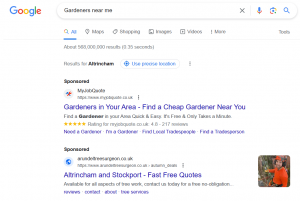
Search Ads are made up of three main components; headline, description, and display URL. Ad extensions can also be added to provide consumers with additional information such as sitelinks, callouts, and structured snippets.
Understanding Display Ads
Display Ads perform very differently to Search Ads. The main difference is that search ads are a form of “pull” advertising whereas display ads are “push” advertising.
This means that search ads will only appear to those who are already searching for your product or service while display ads are paid placements that appear based on various targeting parameters.
Display ads also aren’t limited to appearing in only one location like search ads. Instead, they appear across the entire GDN (Google Display Network) meaning it reaches 2 million sites and over 90% of online users.
As display ads are image focussed, they can also show on social media either natively on the news feed or on the side of main feed.

Comparing Search Ads and Display Ads
Metrics
Conversion rate and cost per click are the two biggest metrics to track and consider for both search ads and display ads.
This is because the Google Ads Industry Benchmarks for each advertising platform varies greatly.
Conversion Rate
The average conversion rate across all industries for display ads is 0.55% compared to 4.2% for search ads.
But what is a good CVR (conversion rate) for you? It’s difficult to define exactly what is a good CVR for Google Ads is as it can depend on many variants such as your industry, campaign goals, time of year and more.
However, once you have run a number of campaigns and have your own data specific to your business, you will be able to create your own benchmark from what you have achieved through previous campaigns.
Note: The reason search ads typically have a higher CVR than display ads is because the Search Network connects your ads to people who are actively looking and searching for your products or services and so are naturally more likely to convert.
Cost per click
The average CPC (cost per click) for search ads is $2.41 compared with $0.59 for display ads. So, although the average conversion rate for display ads is lower, so is the average cost per click which is a major benefit for businesses with a small budget or trying to save ad spend.
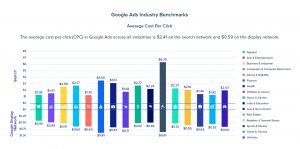
When to use Search Ads vs when to use Display Ads
If your campaign budget is large enough, you can choose to run both search ads and display ads side by side.
However, the two aren’t interchangeable and some campaigns are typically more suited to one ad format than the other.
3 reasons to use search ads
Targeting options
Search Ads allow you to have more control over who sees your ad and therefore reduces the amount of money you waste on on people who aren’t interested.
You can target age, gender, interests, location and more to ensure you are only appearing infront of those people who are most likely to make a purchase or use your service.
Short-sales cycle
If your product has a short sales cycle, then Search Ads are for you. This is ideal as you don’t need to continue advertising (remarketing) to people that have previously engaged with your brand.
Emergency products/services
When you get locked out of your house, your pet suddenly falls ill or you have a leak in the roof, what do you do?
More than likely, you go to Google and search for a service to help immediately.
If you provide an emergency service such as plumbers, locksmith, electricians etc, then it is a good idea to start with search ads. These are services that are unlikely to convert whilst reading a blog or scrolling through social media and happen to see your display ad.
3 reasons to use display ads
Visual representation
If your product or service lends itself to being promoted with images and videos, then display advertising is for you. It is great for promoting consumer goods and services that rely heavily on visual demonstration such as home decor or adventure/entertainment.
Build awareness
People who are browsing a website and see your Display Ad aren’t usually actively searching for the product or service you offer. They are more than likely in the awareness stage of the marketing funnel and researching their options with passive intent.
This means that display ads lends itself to brand awareness campaigns rather than focussing on immediate conversions. On average, a customer needs to see your brand 7 times before they go on to make a purchase.
Longer sales cycle
Just as search ads perform better for businesses with a short sales cycle, display ads are better for those with a long sales cycle.
If your product isn’t typically purchased immediately (cars, higher education, houses etc), then you will benefit from display ads over search ads.
In these situations, you must ensure that your brand stays in people’s minds so that when they are ready to make a purchase, your brand is first choice.
Having multiple touch points is crucial and the display ads ability to show your ad across the Google Display Network will help you to achieve this. You could also create a retargeting campaign to accompany this.
Both ad formats have their pros and cons and can be extremely useful when used in the right situations.
Even after you have selected your format and planned your campaign, you must ensure the landing page is optimised for your goals whether that’s awareness or conversions to achieve maximise results.
Want help building your campaigns and landing page?
Our team of experts can help your business reach new heights through Google Ads.
